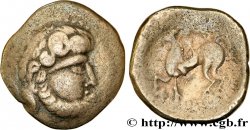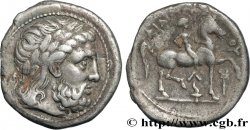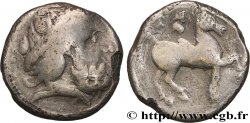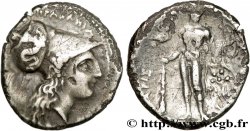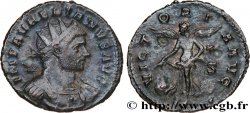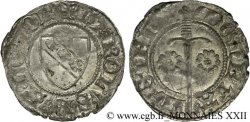bga_177705 - DANUBIAN CELTS - TETRADRACHMS IMITATIONS OF PHILIP II AND HIS SUCCESSORS Tétradrachme “au monogramme d’Audoléon”
无库存.
所有在网站上销售的产品
价格 : 750.00 €
所有在网站上销售的产品
价格 : 750.00 €
种类 Tétradrachme “au monogramme d’Audoléon”
日期: c. IIe-Ier siècles AC.
材质 silver
直径 23,7 mm
模子方针 8 h.
重量 13,2 g.
稀少度 R2
关于品相的说明
Très beau portrait sur un flan relativement large. Revers stylisé. Frappe un tout petit peu faible sur la partie supérieure du cavalier au revers. Jolie patine de médaillier, avec une légère rayure à 12h au revers et sur la queue du cheval
正面
正面的文字 ANÉPIGRAPHE.
正面的说明书 Tête barbare, laurée et barbue de Zeus à droite.
背面
背面的文字 ANÉPIGRAPHE.
背面的说明书 Cavalier très stylisé, sur un cheval plus réaliste ; une volute devant le poitrail, une esse bouletée sous la jambe gauche du cheval et un fleuron sous le ventre.
评论
Sur ce type, la couronne de laurier est très importante d'où l'appellation de "Verkehrten Lorbeerkranz". Elle est de plus perlée aux extrémités, visible sur notre exemplaire au-dessus du front. Au revers, outre le monogramme, nous avons deux symboles énigmatiques, l'esse bouletée entre les antérieurs du cheval et la volute devant le poitrail.








 对产品描述纠错
对产品描述纠错 打印
打印 分享我的选择
分享我的选择 提问
提问 Consign / sell
Consign / sell
 产品介绍
产品介绍